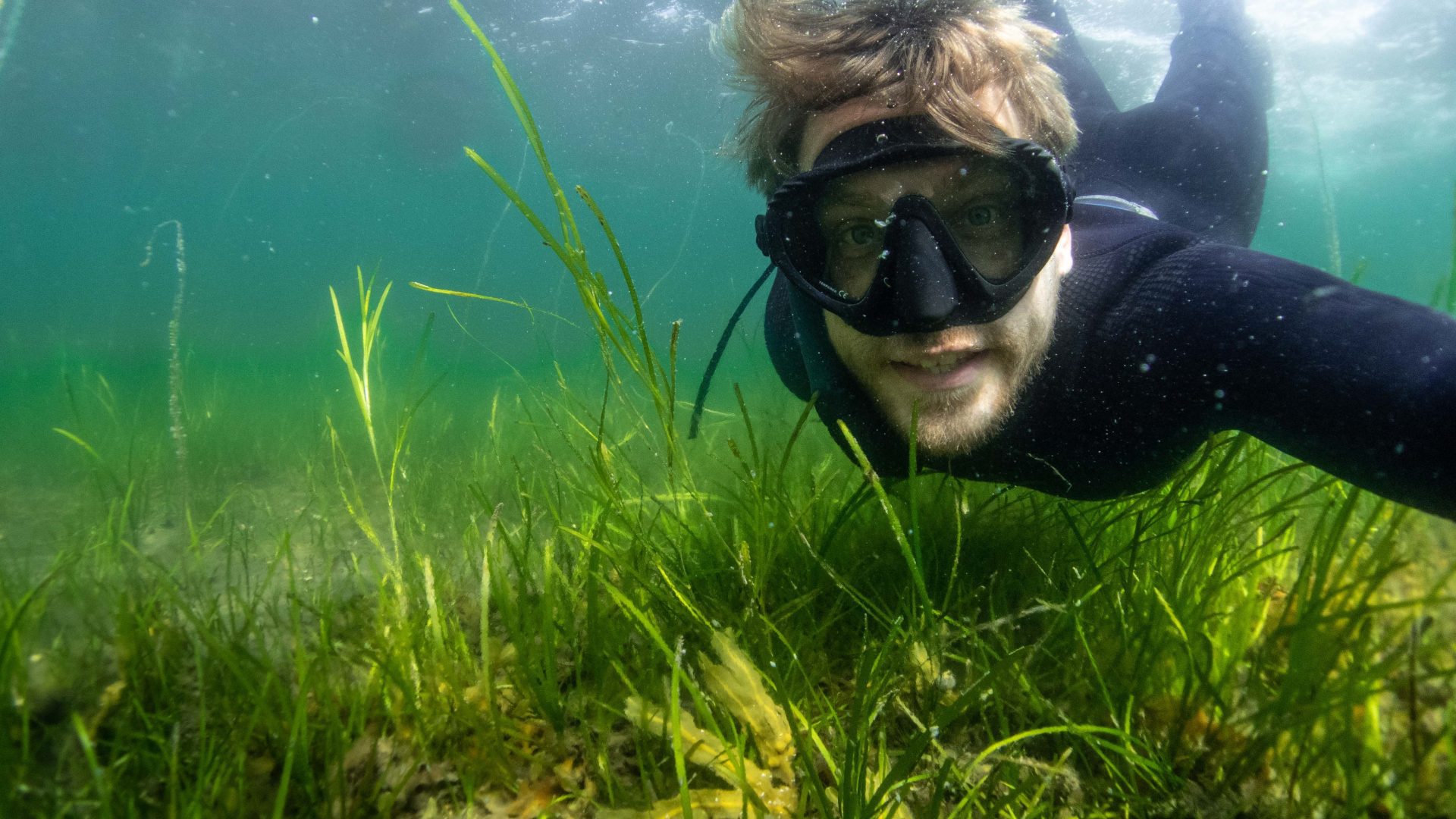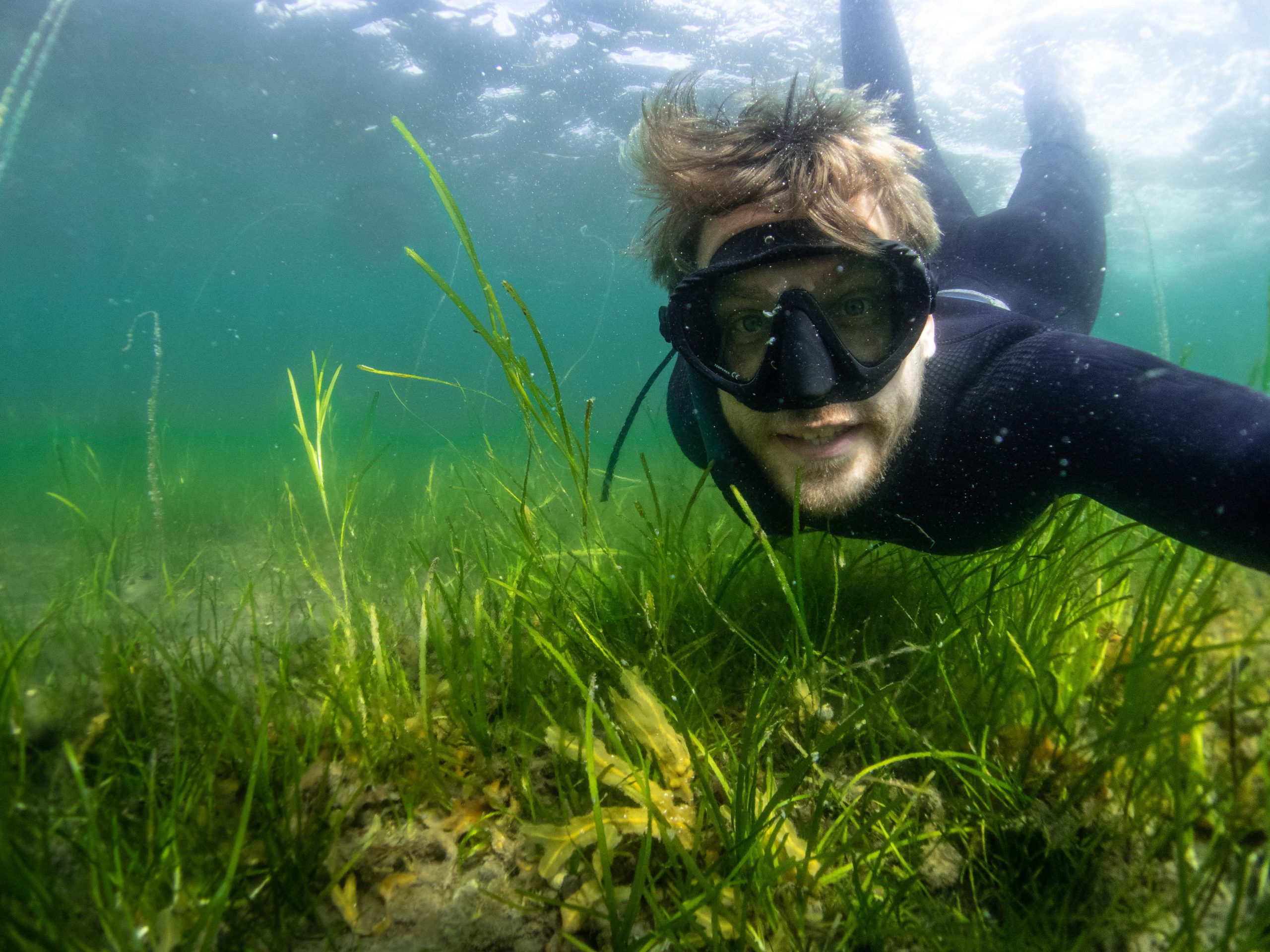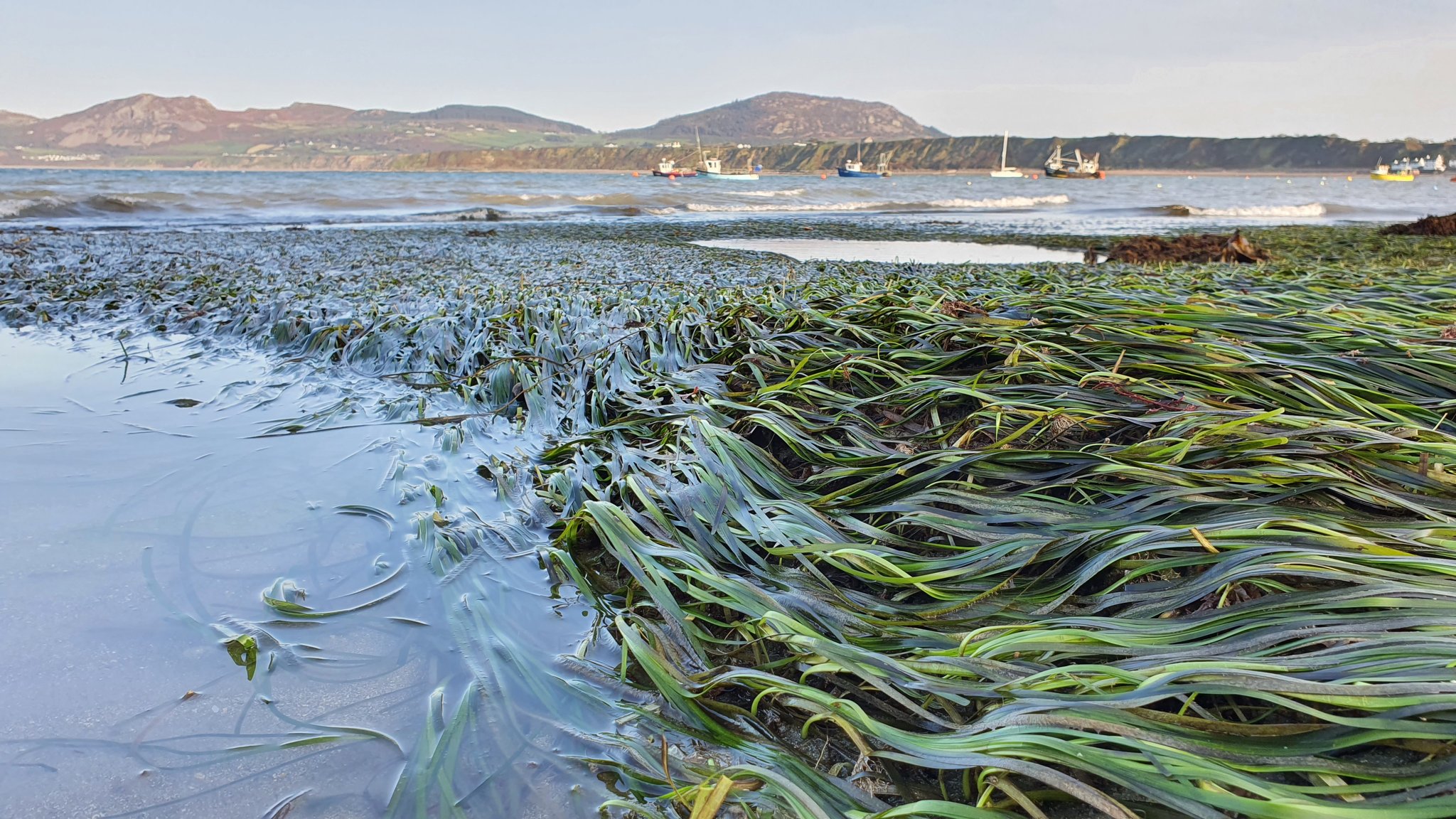
Vision for the Ocean – Benjamin Jones, Project Seagrass

Benjamin from Project Seagrass swims underwater in a seagrass meadow.
This blog is the first in our ‘Vision for the Ocean’ series.
Launching this World Ocean Day, Tuesday 8 June , we’re showcasing inspirational stories of people and organisations who are seeking to protect the ocean and all it makes possible. We’re proud to call all these ocean lovers our friends and partners in the fight for our blue planet.
By working together, we can achieve a thriving ocean, thriving people.
“Seagrass meadows have been a constant within our oceans for millennia. These unique marine plants are the only rooted plant that exist in our oceans and returned to the sea around 65-100 million years ago. Over the years that followed, seagrass evolved and adapted to a life underwater. Just like flowering plants on land, seagrasses have flowers, fruits and seeds, but without insects and the wind, pollination and movement of seeds is helped by marine animals and water movements. Small crustaceans have been described as the ‘bees of the sea’ because they pollinate seagrass flowers just like bees do for land plants.
We started Project Seagrass with a vision, a vision for a world in which seagrass meadows are thriving, abundant and well managed for people and planet.
This vision remains and is within grasp if we acknowledge seagrass meadows for the benefits they provide and act to conserve them.
Seagrass was used in the 1800s as insulation and its popularity as a building material surged. However, by the 1920s, a plant disease now known to be caused by a marine slime mould began wiping out seagrass meadows. By the mid-1930s, the seagrass was virtually extinct across most of the northern hemisphere.
Out of sight and out mind, in the decades that followed, seagrass meadows continued to be lost on a global scale. Despite some recovery in the North Atlantic, seagrass area in this region is still 40-70% smaller in size than when our records begin. Estimates suggest that around 44% of the UK’s seagrass area has been lost since 1936, with less conservative estimates placing that figure at over 90%. But its only until recently that we have begun to understand what this means and why seagrass meadows are important at the global level.

We now know that seagrass meadows are vital for biodiversity, people and the planet. Seagrass meadows are hotspots of marine biodiversity, including protected and charismatic species like rays, seahorses, dugongs and turtles. Seagrass meadows support fisheries by providing nursery habitats for fish, bivalve, and crustacean species, providing livelihood opportunities and food security for millions of people across the world.
Seagrasses are also natural filters that absorb excessive nutrients out of the water column and store them in their rich sediment. Places with seagrass have up to 60% less harmful bacteria, such as Vibro cholareae, the causative agent of cholera, than adjacent sandy areas do. And finally, seagrass meadows store large amounts of carbon, helping to mitigate climate change. Unlike trees, which store carbon within their trunks, seagrass export carbon into the sediments below them, trapping it and locking it away for centuries.
To secure a future for the world’s seagrass, we need to respond to this loss with action. Actions that go beyond constantly evolving paper-based targets, to something that is measurable and impactful, at both global and local scales.
With this in mind, there is ocean optimism, there is hope for the world seagrass meadows. At Project Seagrass we’ve made it our mission to secure a future for seagrass.
We’ve embarked on a series of innovative restoration programmes to garden the sea. Combining scientists and communities to bring biodiversity back to our oceans, contribute to carbon sequestration and a host of other benefits that seagrass provides. All around us we seem doom and gloom – stories of polluted rivers, deforestation, forest fires and devastating hurricanes. While doom and gloom is needed to alert society to the problems we face, these negative stories may only serve to fuel feelings of hopelessness; feelings those certain problems are ‘too big to be fixed’ or that societal contributions won’t help.
So, instead, our aims here are to foster hope, and inspire the restoration of seagrass in the UK. To show that people can make change. It’s just as much conservation for communities as it is communities doing conservation. We’re harvesting its seeds – seeds that are then used to plant hope.
Working with communities across Wales, Scotland and England, we’ve now planted well over 1 million of these seagrass seeds that will go on to create thriving marine ecosystems.
In turn, these could rejuvenate cod and oyster fisheries by providing favourable habitats, clean up our waterways providing safe and healthy spaces for recreation, and can help us in our fight against climate change by absorbing and locking away carbon in our oceans.
I see our work as an underwater exhibition of what our coasts could and should look like. And success stories in other areas of the world give us hope that this can happen.”
Benjamin Jones is the Director of International Operations & Co-Founder at Project Seagrass, an organisation devoted to the conservation of global seagrass ecosystems through education, influence, research and on the ground action. He is currently conducting his PhD investigating the relationship between seagrass meadows, small-scale fisheries and poverty alleviation. On behalf of Project Seagrass, he shares with us the importance of seagrass in the ocean infrastructure and his hopes for the future of the ocean.
Visit the Project Seagrass website here.
